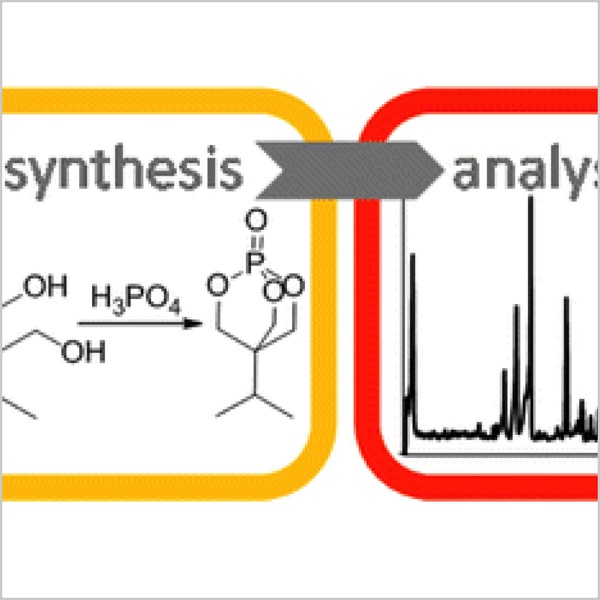
Title: A Systematic Method for the Targeted Discovery of Chemical Attribution Signatures – Application to Isopropyl Bicyclophosphate Production
Abstract: Potential attribution signatures for the synthesis of a highly toxic bicyclophosphate, 4-isopropyl-2,6,7-trioxa-1-phosphabicyclo[2.2.2]octane 1-oxide (Isopropyl Bicyclophosphate or IPBCP) were discovered using a trilateral synthetic, analytical, and statistical approach. Initially, five synthetic routes were confirmed to successfully produce IPBCP using a range of reaction solvents, reactant ratios, and reaction temperatures. Experimental design principles were subsequently used to guide a formal study specifically aimed at discovering attribution signatures that could be used to differentiate forensic samples. A comparison of three-dimensional scatter plots comprised of the detected ions, their relative retention times (RRTs) and intensities (from LC-MS analyses) identified: (1) signatures that were unique to a synthetic route; (2) signatures associated with a combination of synthetic route and reaction solvent; (3) signatures related to reaction solvent, and (4) signatures associated with reagent source. Top level analysis revealed that the majority of the signatures are related to the synthetic route or a combination of the synthetic route and reaction solvent. Deeper analysis utilizing high resolution mass spectrometry (HRMS) and MSn revealed that most of the signatures stem from impurities in the reagents or byproducts formed from incomplete reactions between the reagents used in a given synthetic route. Finally, a subsequent validation study was performed to assess the presence and absence of the key route dependent signatures.
View Paper on Analytical Chemistry
Authors: Carolyn L. Mazzitelli, Michael A. Re, Melissa A. Reaves, Carlos A. Acevedo, Stephen D. Straight, and Joseph E. Chipuk

